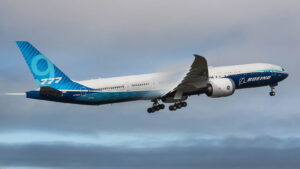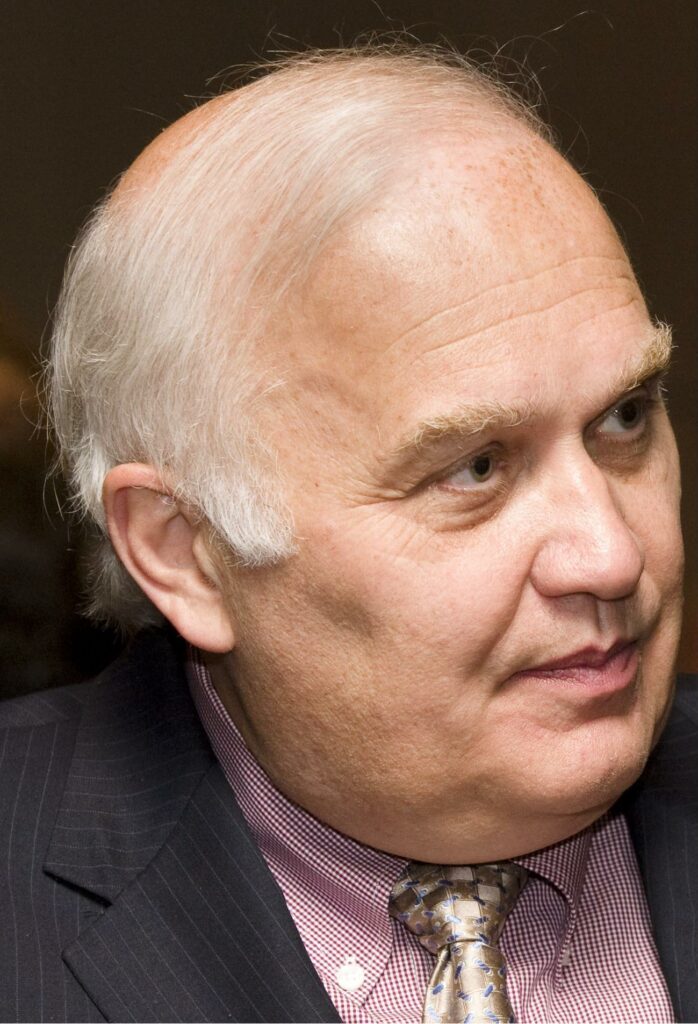Leeham News and Analysis
There's more to real news than a news release.
Airbus, Boeing, Embraer, ATR orders at Day Two of Farnborugh
By Alex Derber
(c) Airfinance Journal, July 19, 2022
Commercial aircraft
– Airline investor 777 Partners placed firm orders for 30 737 Max 8200 aircraft and agreed to a further 36 commitments for the high-density Max model. The aircraft have been earmarked for 777 Partners’ two airline investments: Flair Airlines in Canada and Bonza Airline in Australia.
– Porter Airlines exercised purchase rights and signed a firm order for 20 Embraer 195-E2 passenger aircraft, adding to its existing 30 orders. Porter’s first delivery is scheduled for the second half of 2022, when the Canadian carrier will become the North American launch customer for the E195-E2, while will be powered by Pratt & Whitney Geared Turbofan engines.
– Aercap ordered five additional 787-9s, taking its existing and on-order portfolio for the widebody family to 125 units.
– Aviation Capital Group ordered 12 additional 737 Max 8s, which have expanded the lessor’s Max order book to 34 aircraft.
– Delta Air Lines confirmed additional orders for 12 Airbus A220-300 aircraft. The US airline has now ordered 107 A220-family aircraft, the first of which it received in late 2018. The aircraft are powered by Pratt & Whitney Geared Turbofan engines.
Assessing future twin-aisle production rates
Subscription Required
By Vincent Valery
Introduction
July 18, 2022, © Leeham News: There were 98 twin-aisle passenger aircraft deliveries in 2021, the lowest number since 1987 (90). The 2021 tally was down 73% compared to the peak of 362 deliveries in 2015.
The minimal number of Boeing 787 Dreamliner deliveries in 2021 explains why 2021 twin-aisle passenger deliveries fell so low. However, the twin-aisle passenger market slowed down before the Covid-19 pandemic. The travel restrictions imposed during the pandemic brought long-haul traffic to levels last seen in the 1950s at the start of the jet age.
With international travel restrictions progressively lifting, long-haul traffic is gradually recovering. However, the draconian travel restrictions imposed by China and the closure of the Russian airspace to numerous airlines have slowed down the return of demand.
Airbus and Boeing reduced passenger twin-aisle production rates to a minimal: five per month on the A350 and 787 (before the production issues) and two per month on the A330neo. Boeing stopped producing 777-300ERs, with one unit pending delivery to China Southern Airlines. The extensive 777X production delays led Boeing to halt its production.
In its 2021 Commercial Market Outlook (CMO), Boeing envisioned a market for 7,670 passenger twin-aisle deliveries over the 2021-2040 period.
LNA analyses the size of the passenger twin-aisle market, both for replacement and growth. The goal is to assess the range of possible twin-aisle production rates over the next two decades.
Summary
- Outlining the analysis hypothesis;
- Assessing production rates for replacements;
- An outsized impact of growth assumptions;
- Geopolitical and environmental considerations;
- A segment with more uncertainty.
Future of 737-10 MAX clouded by Calhoun: What it means
By Scott Hamilton

CEO David Calhoun said Boeing might cancel the 737-10 MAX program if the FAA doesn’t certify it by year-end or Congress doesn’t grant an extension of a mandated deadline. Photo Credit: Leeham News.
July 17, 2022, © Leeham News: Boeing CEO David Calhoun cast doubt over the future of the 737-10 MAX in a July 7 interview with Aviation Week magazine.
With questions about whether the Federal Aviation Administration will certify the MAX 10 by year-end, doubts about the program’s future had been whispered in the market for weeks. A Congressional mandate adopted in the wake of the MAX crisis established the Dec. 31 deadline for the MAX 10. Boeing already has talked with customers about swapping MAX 10 orders for the 737-9 MAX, according to market sources.
The 737-7 MAX also remains uncertified even though flight tests have been completed.
Boeing sees long-term demand bouncing back after pandemic
July 16, 2022, © Leeham News: After years of market turmoil, Boeing and Airbus see brighter skies–and bigger order backlogs–ahead. Both companies maintained confidence that demand for aircraft would bounce back as the COVID-19 pandemic ebbed. Passenger traffic and aircraft utilization seem to back up their optimism. Traffic is bouncing back despite short-term economic concerns, a pandemic that is still smoldering and Russia’s invasion of Ukraine.
 Boeing projects demand for 39,050 new commercial aircraft, excluding regional jets, over the next two decades, according to its Current Market Outlook, which it released Saturday. The company’s forecast is in line with Airbus’ forecast of demand for 39,500 aircraft. Single-aisle aircraft make up three-quarters of demand in both companies’ outlooks. Boeing is slightly more bullish on passenger widebody demand.
Boeing projects demand for 39,050 new commercial aircraft, excluding regional jets, over the next two decades, according to its Current Market Outlook, which it released Saturday. The company’s forecast is in line with Airbus’ forecast of demand for 39,500 aircraft. Single-aisle aircraft make up three-quarters of demand in both companies’ outlooks. Boeing is slightly more bullish on passenger widebody demand.
Sustainability is an increasingly important factor in Boeing’s market outlook. It is also a relatively new variable, and how much it will shape market demand and in what ways is not very clear.
Dual or Single Aisle for Long-haul?
Subscription Required
By Bjorn Fehrm
Introduction
July 14, 2022, © Leeham News: What is the most economical way to fly long-haul up to the range of the Airbus A321XLR? The single-aisle alternative or stay with the trusted widebody?
The intuition says the single-aisle must be lower cost and, therefore, return better margins, given the same ticket prices for equal comfort seats. But is this true? We use the Leeham airliner performance and economic model to find out.
Summary
- When comparing single-aisle and widebodies, it’s important to equalize the cabin standards.
- There are also differences in cruise speeds and, therefore, flight times.
Pontifications: China still needs Boeing as much as Boeing needs China
July 11, 2022, © Leeham News: The July 1 announcement by Airbus that it won orders for 292 airplanes from China, for the Big Three carriers, was treated as a shocker by some.
Boeing, which has been frozen out of the Chinese market since 2017, blamed geopolitical issues for its dry spell. To be blunter, blame it on former President Donald Trump, who began a trade war with China that inexplicably continues well into the first term of the Biden Administration.
Trump’s shoot-from-the-lip foreign policy routinely failed to consider geopolitical issues. Joe Biden is more thoughtful, but 18 months into his presidency has done little to repair relations with China. To be sure, there must be a balance when dealing with China and trade.
The country routinely engages in cyber-based industrial espionage, and this must be stopped. Honoring intellectual property rights is mere rhetoric by Beijing. But about a third of orders for Airbus and Boeing historically come from China. Boeing has about 140 737 MAXes in long-term storage destined for China. Despite global air traffic recovery, China’s zero-tolerance policy toward COVID continues to suppress domestic demand, another factor in Boeing’s storage problem.
But geopolitics is a real issue. Here’s what Boeing said following the Airbus order:
Pontifications: Boeing vows to maintain freighter dominance
June 27, 2022, © Leeham News: Boeing dominated the jet freighter market from the dawn of the jet age. It aims to keep its dominance.
But for the first time since the collapse of McDonnell Douglas in 1997, Boeing is being credibly challenged by Airbus and P2F conversions. Airbus is selling the A350F. EFW, which is a joint venture between Airbus and ST Aerospace, and IAI Bedek offer freighter conversions for the A330. The A350F is Airbus’ first credible challenge to Boeing’s dominance in the widebody freighter section. (The A300-600RF was a niche aircraft. A310 combis and the A330-200F were unsuccessful.)
EFW, Precision Conversions, and nominally at least two others offer conversions for the A320/321. There are more than 100 A330 P2F and at least five dozen A320/321 P2F orders, marking the first challenge to Boeing’s dominance in narrowbody freighters converted by the aftermarket.
Boeing has been testing the market for months on whether to launch a conversion program for the 777-300ER. Boeing Global Services announced in 2018 at the Farnborough Air Show that it was launching a -300ER P2F program, but never followed through. If Boeing proceeds this time, it faces competition from IAI Bedek, Mammoth Freighters, and Kansas Modification Center, each of which already has firm orders for about 65 conversions.
Commercial Aircraft programs duration from launch to delivery over the years
Subscription Required
By Vincent Valery
Introduction
June 20, 2022, © Leeham News: New airplane programs used to come to market in four years. Now, the launch-to-entry-into-service period has been seven years or more. (Chinese and Russian programs take even longer.)
Boeing launched the 787 in December 2003. EIS was October 2011. Airbus’ A350, launched in response to the 787 in 2004, went through several iterations which added time to the program. Delays added more time. EIS was in January 2015.
Bombardier’s C Series was launched in 2008. EIS was in July 2016. The Boeing 777X was launched in 2013. EIS is now targeted for 2025. Boeing launched the 747-8 in 2005. EIS was in 2011. The Boeing 737 MAX was launched in July 2011. EIS was May 2017. Airbus’ A320neo was launched in December 2010. EIS was in January 2016.
Boeing has been discussing the New Midmarket Airplane (or whatever it was called throughout changing nomenclature) since 2012. It still hasn’t launched the program. Once it does, how long will it take to enter service?
Any new program is a multi-year, multi-million investment that, in the worst case, can take decades before recovering the initial development and production ramp-up expenditures.
Several recent programs, notably the 777X, have faced significant delays between the envisioned and actual start of deliveries to airlines.
Boeing claims that advances in manufacturing techniques will reduce the time required to develop the next aircraft program. However, regulatory scrutiny is higher nowadays and the aircraft built are more complex than in previous generations.
LNA analyzes how the time between the program launch and entry into service has evolved since the beginning of the Jet Age. The goal is to find whether there is a trend and in what direction. The analysis focuses on Airbus, Boeing, Lockheed, and McDonnell Douglas.
Summary
- An unmistakable trend;
- The latest clean sheet designs took significantly longer;
- Engine development dictates recent derivative program timelines;
- Future program considerations.
Migrating advanced processes from Defense to Commercial isn’t a cakewalk for Boeing
Subscription Required
By Scott Hamilton
June 13, 2022, © Leeham News: Boeing’s CEOs, David Calhoun and his predecessors Dennis Muilenburg and Jim McNerney, said repeatedly the next Boeing airplane (NBA) will be as much as about production as it will be about the airplane. In fact, Calhoun says production is key to designing, producing, and delivering a less expensive airplane that will underpin the value proposition going forward.
Engine technology advances might achieve a 10% reduction over today’s CFM LEAP and Pratt & Whitney Geared TurboFan engines. So, advanced design and production is key to the business case for the NBA.
Despite using these advancements on Boeing defense programs (the T-7 Red Hawk trainer and MQ-25 unmanned aerial refueling airplane), assimilating them into commercial airplane development and production has high hurdles.
Summary
- Boeing has had mixed success using advanced technology design and production on its current commercial programs.
- Regulatory approvals will be challenging.
- Engines will be 10% better than the LEAP and GTF—but are these the correct comparisons?
Pontifications: Some customers anticipate up to year delay in certification of A321XLR
June 13, 2022, © Leeham News: Airbus scheduled the first flight of its Xtra Long Range A321XLR Wednesday.
Some customers think certification of the airplane will be delayed up to a year as Europe’s EASA and the USA’s Federal Aviation Administration demand changes to the integrated aft fuel tank that gives the XLR an advertised range of 4,700nm.
That was the consensus of those I talked to who gathered last week at an industry event in Chicago. Airbus already said the XLR certification will be delayed by a few months as regulators review how the fuel tank is integrated into the airplane.





